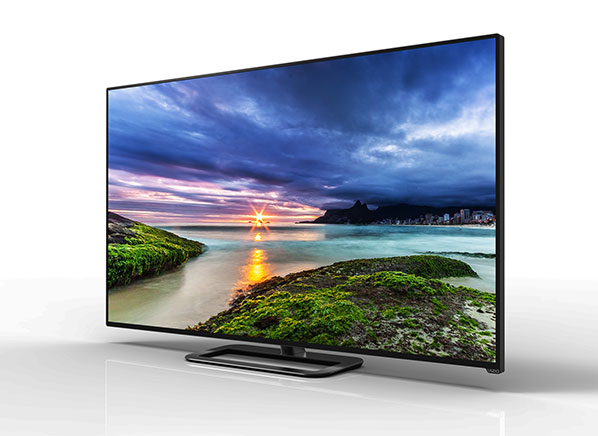The first Saturday morning session of SMPTE’s Technology Summit On Cinema at NAB focused on factors that could impact the UHD TV rollout, including research on what humans are able to see and observe. During a panel titled “Understanding the Human Vision System,” Dr. Jenny Read of Newcastle University Institute of Neuroscience set the stage by discussing four parameters of vision: spatial resolution, temporal resolution, dynamic range, and color perception. Related studies from Dolby, EBU and EPFL were presented.
Because our eyes can see detail up to 60 cycles per degree of visual angle, a screen with 3700 pixels across viewed at the recommended viewing distance of 1.87 picture widths would show detail at the limit of human perception.
Our eyes can see flicker up to 60hz, so a temporal resolution (frame rate) of at least 120hz is needed to eliminate flicker in an alternating black-to-white image. Dr. Read added that perhaps humans enjoy the flicker as part of the experience when they watch screens.
 When it comes to dynamic range, our eyes adapt to the ambient luminance, and a comfortable dynamic range is linked to that ambient luminance value. We can see more detail in blacks when the ambient luminance is dark than when the ambient luminance is bright.
When it comes to dynamic range, our eyes adapt to the ambient luminance, and a comfortable dynamic range is linked to that ambient luminance value. We can see more detail in blacks when the ambient luminance is dark than when the ambient luminance is bright.
Color perception is linked to our sensitivity to light within a gamut. We are less sensitive to fine variations in color than in fine variations in luminance. She suggested that 12-bit depth color is ample, while 8-bit depth color isn’t nearly enough.
SMPTE Engineering VP Dr. Hans Hoffmann, head of media fundamentals and production for the European Broadcasting Union (EBU), presented the findings of a joint EBU, EPFL, and Dolby study of human subject preferences for various dynamic ranges. Both temporal and side-by-side tests were run using material displayed at 100 nits, 400 nits, 1000 nits, and 4000 nits. Given a pair of images at different nit values, the subjects overall tended to prefer the brighter image.
Dr. Touradj Ebrahimi, a professor at the Swiss Federal Institute of Technology (EPFL), presented the results of a similar study with a simpler design. Subjects were shown split-screen side-by-side paired content on a Dolby Pulsar display at various 100, 400, 1000, and 4000 nit values, and asked in each pairing whether the image on the right was better, worse, or the same as the image on the left.
Dr. Ebrahimi found that this methodology correlates well with Dr. Hoffmann’s approach, and the subjects easily understood what they were being asked to do. The results showed that increasing brightness brings clear perceived quality improvement at each step for HDR video; 100 nits, 400 nits, 1000 nits, and 4000 nits. The UHD TV test still being planned at the ETC is currently considering following Touradj’s methodology.
During the Q&A session it was generally agreed that the impact of ambient light in the test design needs further study. SMPTE’s Bill Miller heads a SMPTE group working on the impact of ambient light on testing.
Dr. Hoffmann also noted that only cinema-style content was used in this study. Future studies should try to get test material showing other genres, including sports.
Other groups conducting related studies are ITU-R WP6C RG-24, VQEG, MPEG, SMPTE, JPEG, DVB and the ETC.
Overall, the UHD TV session presented important findings in easy-to-follow presentations. SMPTE usually makes the presentation decks available on the organization’s website within weeks of the conference, subject to approval by the presenter.
Related News:
NAB Preview: Who is Betting on Ultra HD?, The Hollywood Reporter, 4/4/14
NAB: Chris Cookson Questions Future of Cameras and Potential of ‘IMAX on Steroids’, The Hollywood Reporter, 4/5/14
Predicting the Future of Cinema: No Limits — and the Web Wins, Variety, 4/5/14
NAB: Will Economics Allow for Another Change in Digital Cinema?, The Hollywood Reporter, 4/5/14
NAB: Moviegoers Won’t React to HDR Imagery as They Did to Hyper-Real ‘Hobbit’, Proponents Say, The Hollywood Reporter, 4/6/14
NAB: ‘Gravity’ Cinematographer Emmanuel ‘Chivo’ Lubezki Would Consider HDR for ‘Birdman’, The Hollywood Reporter, 4/6/14

No Comments Yet
You can be the first to comment!
Leave a comment
You must be logged in to post a comment.